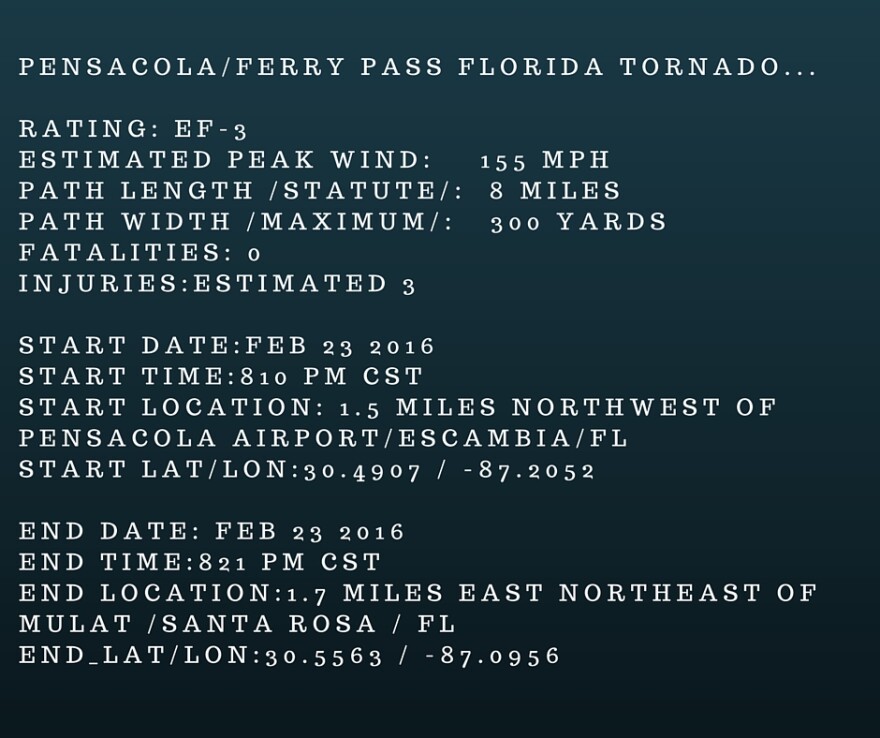The numbers and other data are in about Tuesday night’s Pensacola tornado, as to its size and scope. They’re almost a carbon copy of the twister hitting Century.
Investigators with the National Weather Service in Mobile say the twister was an EF-3, with top winds of 155 miles an hour.
“It was based on the damage that occurred in a corridor from The Moorings apartments, the GE plant, as well as the Grand Baroque townhomes on Scenic Highway,” said Jason Beaman, the Warning Coordination Meteorologist at NWS Mobile.
One week ago Weather Service investigators were in Century, plotting the course and measuring that tornado. Beaman says the two were almost identical, and equally very rare.
“Both in the mid-EF-3 range, with winds of 150-155 mph – their intensities were very similar -- obviously, high-impact for both locations,” Beaman said.
The recipe for a tornado begins with unstable air – warm and moist in the lower atmosphere, cold and dry in the upper atmosphere that clash and produce thunderstorms. Beaman says another factor nowadays is found out in the Pacific Ocean.
“And that is characteristic of an El Nino season, where we get these unusually deep low pressure systems that track across the area, and can produce severe weather in our part of the world,” Beaman said.
As with all storm data, the Weather Service will review it for ways to do things better next time, and improve warning and information techniques. Residents, says Beaman, need to do the same thing in the way of preparedness, starting with a weather radio and mobile devices.
On March 18, 1925, the “Tri-State Tornado" killed 695 people as it traveled more than 300 miles through Missouri, Illinois and Indiana. Packing 260 mile an hour winds, it was rated an F-5 on the old Fujita scale. Since then, tornado-related deaths have dropped significantly, with technology playing a major role.
“From our ability to research and identify those days that are really going to be potential severe weather producers, and getting the message out to people and then give them the warnings,” said Beaman. “However, with all that technology if people don’t take action upon the information they’re receiving, then it’s all for naught.”
Nobody died in the tornadoes that hit Century and Pensacola, and only about a dozen people suffered minor injuries. Residents in both areas get a tip of the cap from forecaster Jason Beaman.
“Many people who did get the warning ahead of time, and took the right actions in getting to an interior room,” Beaman said. “So that’s what was encouraging, that people did get the information because of our great technology, [and] they also acted upon it.”
The cleanup and restoration efforts will enjoy a few days of good weather – a bit chilly, but no rain in the forecast until Tuesday evening, with daytime temperatures climbing into the 70s.


